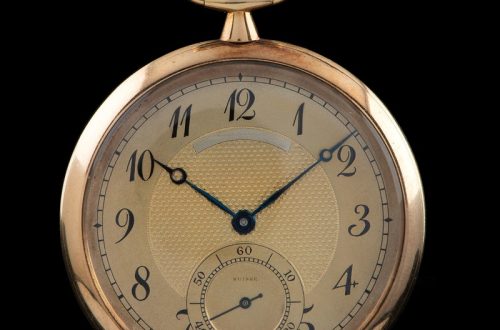Introduction to Watch Movements
Understanding the heart that powers a timepiece is crucial for any watch enthusiast or potential buyer. Watch movements, often referred to as ‘calibers’, are the engines that drive the hands of a watch and execute a myriad of functions, from the simple act of telling time to the complexities of displaying moon phases or a chronograph.
There are three primary types of watch movements that aficionados and consumers tend to compare: quartz, automatic, and mechanical. Each type of movement has distinct mechanisms, power sources, and unique benefits. In the following sections, we’ll delve into how these movements work, discuss their accuracy and reliability, examine maintenance requirements, and consider price factors.
This introductory comparison aims to equip readers with the foundational knowledge to make informed decisions, whether they’re purchasing their first watch or adding to a growing collection. The understanding of watch movements not only enriches one’s appreciation of horology but also aids in determining the most suitable timepiece for individual lifestyle and preferences.
Quartz Watch Movement: How It Works
Quartz movements are watch engines that use battery power. They are well-loved for accuracy and affordability. A small battery sends a current through a quartz crystal, creating vibrations. These vibrations occur at a consistent frequency, making quartz watches very accurate.
Here’s the simple process:
- Battery sends current to quartz.
- Quartz vibrates at a precise rate.
- Circuit counts vibrations and moves hands.
- Time displays on watch face.
Some quartz watches use solar energy, not batteries. This makes them eco-friendlier. Yet, battery-powered quartz watches are more common. Batteries usually last several years before needing a change. Overall, quartz watches are low-maintenance choices for accurate timekeeping.

The Automatic Movement: Self-Winding Innovation
Automatic watches, known for their self-winding mechanism, harness the energy from the wearer’s wrist motion. As you move, a rotor within the watch swings, which in turn winds the mainspring. This stored energy then powers the watch, eliminating the need for a battery.
Here are the key steps in how an automatic movement works:
- Wearer’s movement spins a rotor.
- Rotor winds the mainspring.
- Energy from mainspring drives the gears.
- Gears move the hands, displaying time.
Automatic movements blend innovation with convenience. They allow a watch to operate as long as it’s worn regularly, but if left stationary, it may require manual winding to restart. Unlike quartz movements, automatic watches tend to have a smoother hand movement, which watch enthusiasts often appreciate for its elegance.
However, automatic watches may not match the pinpoint accuracy of quartz watches. They can deviate a few seconds a day, which is normal for mechanical timepieces. For some, the appeal of a self-winding watch overshadows this slight variance in precision.
To summarize, automatic movements offer a balance between mechanical craftsmanship and day-to-day practicality. They’re ideal for those who prefer the character of a mechanical watch without the hands-on upkeep of manual winding.
Mechanical Movement: Tradition and Intricacy
Mechanical movements are the oldest type of watchmaking technology. Unlike quartz or automatic movements, they require manual winding by the user. However, this traditional method of timekeeping is cherished for its intricate craftsmanship and the tactile interaction it provides. Here’s a breakdown of mechanical movement attributes:
- Mechanical watches need regular winding to function.
- They showcase the art of watchmaking through visible gears and springs.
- They often last for decades, becoming heirlooms.
- Tend to be less accurate compared to quartz watches.
- They provide a satisfying, hands-on experience for enthusiasts.
Mechanical movements represent the heritage and pinnacle of horology. They’re best for collectors and those who value the aesthetic and mechanical beauty of a timepiece over stringent accuracy. The ritualistic winding and potential for customization make them highly appealing to purists.
In summary, mechanical watch movements stand out for their traditional appeal and the deep sense of connection they forge between the wearer and the timepiece.
Comparing Accuracy: Quartz vs Automatic vs Mechanical
When choosing a watch, accuracy is a top concern for many. Here’s how different watch movements stack up:
Quartz Watch Accuracy
Quartz watches are famous for precision. A battery sends power to quartz crystal, making it vibrate. A circuit counts these, and the hands move with near-perfect timing. They rarely lose or gain seconds, making them the go-to for accuracy.

Key points for quartz accuracy:
- Powered by battery, not movements.
- Vibrate at a consistent frequency.
- Most accurate; deviate by seconds per year, not daily.
Automatic Watch Accuracy
Automatic watches are mechanical marvels. But, they depend on wrist motion and gravity. This can affect timing. Expect a few seconds of deviation each day. Despite this, many prefer their smooth hand motion and the craftsmanship behind it.
Key points for automatic accuracy:
- Powered by wearer’s motion.
- May lose or gain a few seconds daily.
- Offers balanced accuracy with aesthetic appeal.
Mechanical Watch Accuracy
Mechanical watches, the oldest kind, need manual winding. They echo watchmaking’s legacy. Their gears and springs work without batteries or arm motion. Yet, they may lose more time than quartz or automatic watches. For some, this routine winding is a cherished interaction.
Key points for mechanical accuracy:
- Requires daily manual winding.
- Less accurate; gains or loses time, needs tuning.
- Valued for tradition and craftsmanship over strict accuracy.
In conclusion, quartz watches lead in accuracy, followed by automatics, then mechanical watches. Your choice can depend on your preference for precision or appreciation of traditional watchmaking artistry.
Power Sources and Reliability
When examining the power source and reliability of quartz, automatic, and mechanical watches, distinct differences emerge.
Quartz Watch Power Source
Quartz watches run on battery power. This reliance on batteries ensures consistent performance. Battery life lasts from two to ten years, depending on the watch model. Changing batteries occasionally is necessary for continued operation.
Automatic Watch Power Source
Automatic watches use kinetic energy from wrist movements. They have no batteries. Daily wear keeps these watches running smoothly. If left unworn, they may stop and require manual winding to restart. They offer a reliable power source as long as they’re worn regularly.
Mechanical Watch Power Source
Mechanical watches require manual winding by the user. Their power comes from a mainspring, wound through the crown. This winding action stores energy for the movement. A full wind can last for over a day, but consistent winding is needed for continual operation.
Reliability of Watch Movements
Quartz watches are highly reliable, with precise timekeeping and minimal maintenance. Automatic watches are reliable with regular wear but can be susceptible to time loss due to their intricate mechanical nature. Mechanical watches provide a reliable function with the caveat of needing daily manual interaction.
In conclusion, all three types of watch movements offer varying degrees of reliability. Quartz stands out for minimal maintenance, automatic gains points for the convenience of self-winding, and mechanical stands the test of time with enduring craftsmanship but requires commitment to routine winding.
Maintenance and Longevity
When it comes to keeping your watch running like new, maintenance is key. Regular care can significantly extend a watch’s lifespan, while neglect can lead to early demise. Here’s what you need to know about the maintenance and longevity of quartz, automatic, and mechanical watches.
Quartz Watch Maintenance
Quartz watches are the winners in the low-maintenance category. With fewer moving parts than their automatic or mechanical counterparts, they are less prone to wear and tear. Typically, the only maintenance required is a battery change every few years. Some models may also need occasional seal checks to maintain water resistance. With proper care, a quartz watch can last for several decades, often with the same level of accuracy it had when new.
Automatic Watch Maintenance
Automatic watches are marvels of engineering with a more complex design. They need periodic servicing to keep their many moving parts running smoothly. While manufacturers may suggest servicing every three to five years, usage and environment can affect this timeline. Regular servicing can include cleaning, oiling, and calibration. When well-maintained, an automatic watch can function for many years, even generations, with wearers often passing them down as treasured heirlooms.
Mechanical Watch Maintenance
Mechanical watches demand the most attention. Owners must wind these watches regularly to keep them ticking. In addition to this daily interaction, professional servicing is crucial for continued long-term use. Just like automatic watches, mechanical watches should undergo servicing for cleaning, oiling, and adjustments. With this level of care, mechanical watches too can last for multiple decades, making them cherished items for watch enthusiasts.
To wrap up, the type of watch you choose will impact the maintenance required. Quartz watches ask little of their owners, while automatic and mechanical watches call for more engagement. But no matter which type, a well-maintained watch is a reliable companion for years to come.

Price Considerations
When picking out a watch, price plays a big role. Quartz, automatic, and mechanical watches hit different price points. Let’s break down what impacts the cost of each type.
Quartz watches generally cost less. They have fewer mechanical parts and are cheaper to make. You can find good ones without breaking the bank. Plus, low maintenance means saving money over time.
Automatic watches usually cost more than quartz. They have complex inner workings that cost more to produce. Brand, materials, and craftsmanship also affect their price. But, they offer value through longevity and can be a one-time investment.
Mechanical watches are often the priciest. They represent the art of watchmaking and can be handcrafted. Their price reflects their tradition, precision, and the work that goes into making them. They can be family heirlooms, lasting generations.
To sum up, if you want a cost-effective, precise timekeeper, go for quartz. If you prefer a watch with character and are willing to invest more, consider an automatic. For a watch with timeless craftsmanship, choose mechanical, if budget is less of an issue.
Summarizing Pros and Cons
In comparing quartz, automatic, and mechanical watches, each has its own advantages and disadvantages. Let’s summarize them to help you decide.
Quartz Watch Pros and Cons
Pros:
- High accuracy, rarely loses time.
- Low maintenance; infrequent battery changes.
- Generally more affordable.
- Good choice for practical, everyday use.
Cons:
- Less appealing to watch enthusiasts who prefer mechanical movements.
- Battery disposal can impact the environment.
Automatic Watch Pros and Cons
Pros:
- Self-winding, powered by wrist movement.
- No batteries required.
- Smooth hand movement, often preferred aesthetically.
- Can become a personal heirloom.
Cons:
- Less accurate than quartz, may gain or lose seconds per day.
- Requires regular wear or winding to keep time.
- Higher cost due to complexity.
Mechanical Watch Pros and Cons
Pros:
- Traditional craftsmanship, a favorite of purists.
- Manual winding offers a tactile connection to the watch.
- Potentially long-lasting with proper care.
Cons:
- Daily winding necessary.
- Less accurate than quartz, can gain or lose more time.
- Often the most expensive, due to intricate design.
Each type of watch movement presents a unique set of characteristics. Your choice will depend on your lifestyle, budget, and taste in watches.
Final Thoughts and Recommendations
When considering a new watch, assessing the movement type is essential. Here are some concluding thoughts and pointers to guide your choice:
- Quartz Watches: Ideal for those who prioritize accuracy and convenience. Their low maintenance and affordability make them suitable for daily wear.
- Automatic Watches: Perfect for watch enthusiasts who admire craftsmanship and enjoy the smooth sweep of the hands. They require regular wear or winding, and tend to be higher-end investments.
- Mechanical Watches: For the purists who appreciate traditional watchmaking and don’t mind the routine of winding. They are less about precise timekeeping and more about the experience and heritage.
Ultimately, the right watch for you aligns with your lifestyle and personal preferences. Whether you opt for the precision of quartz, the self-sufficient elegance of automatic, or the classic charm of mechanical, each type offers a unique relationship with time. Remember to factor in maintenance needs, accuracy expectations, and budget when making your decision. Choose a watch that resonates with your sense of style and meets your daily demands, ensuring a timekeeping companion that you’ll cherish for years to come.




